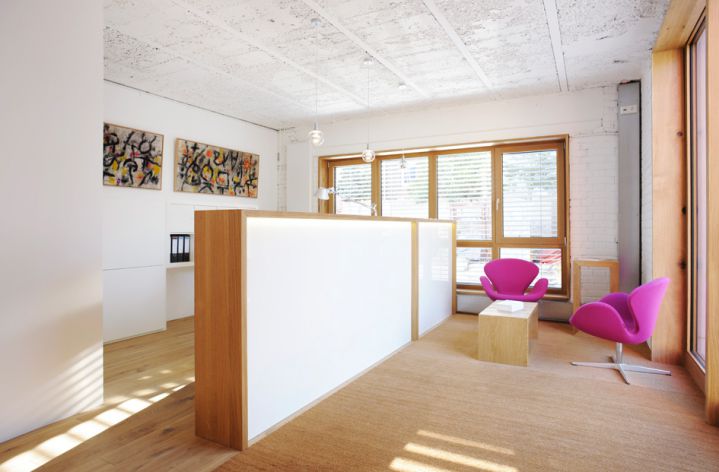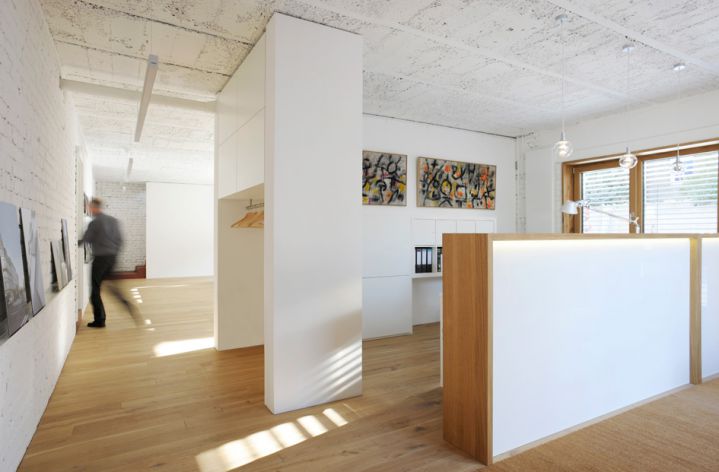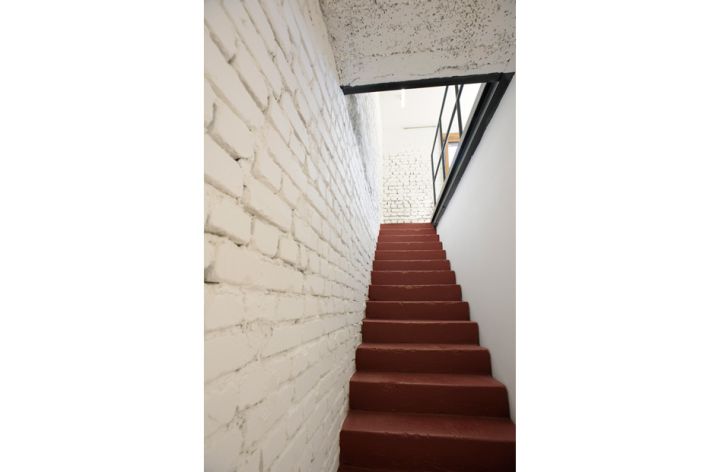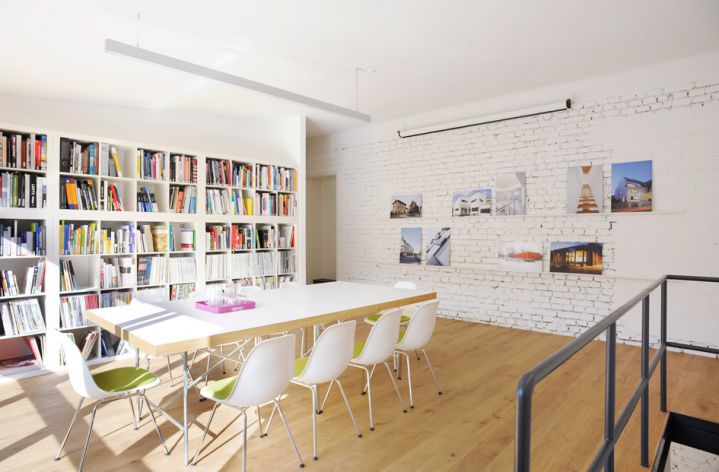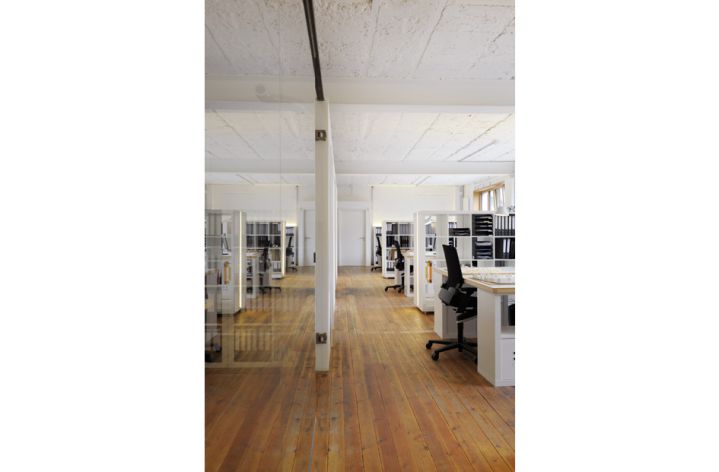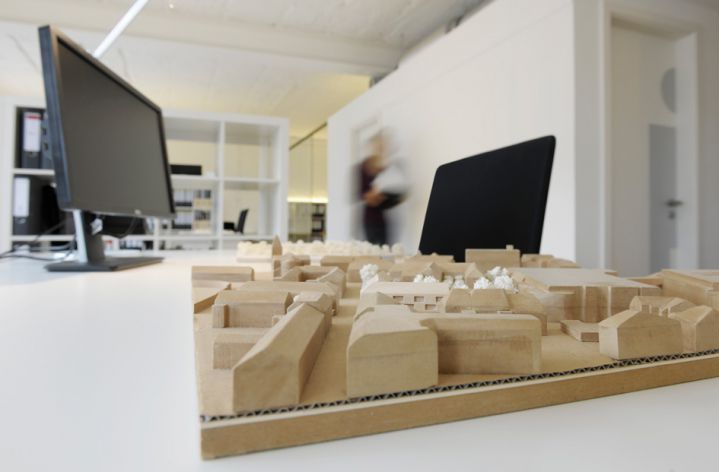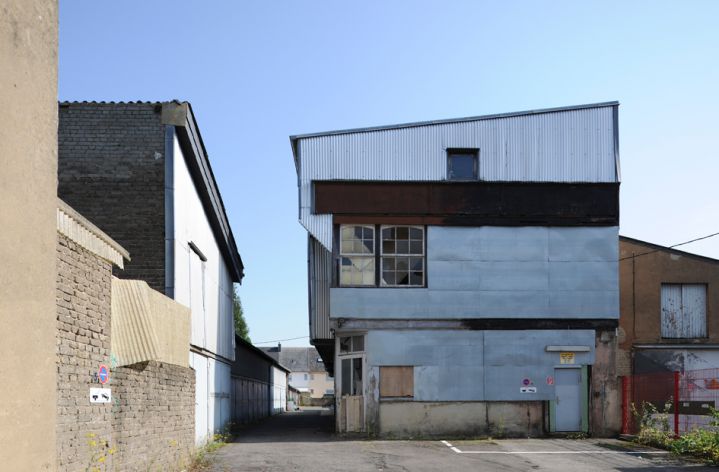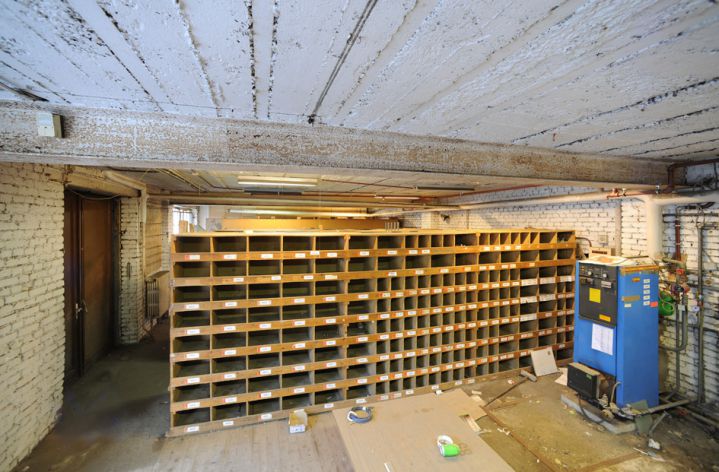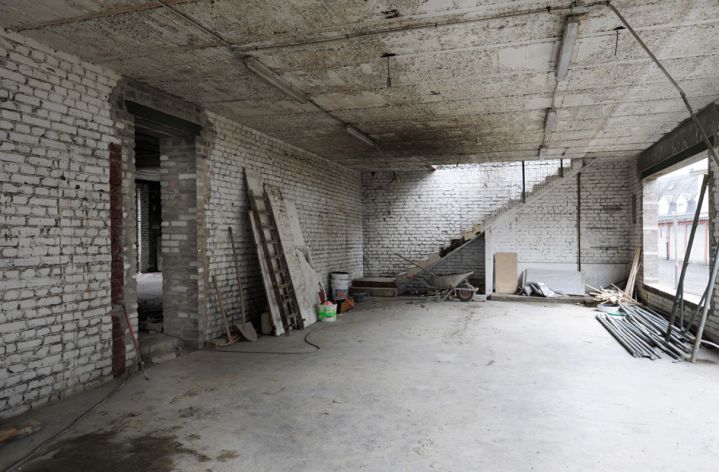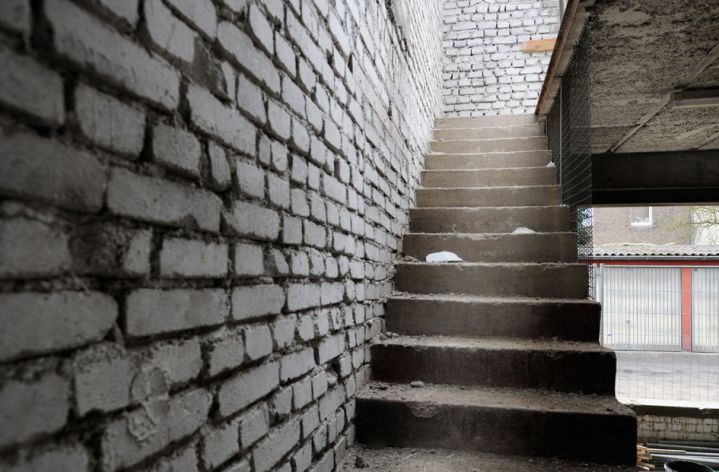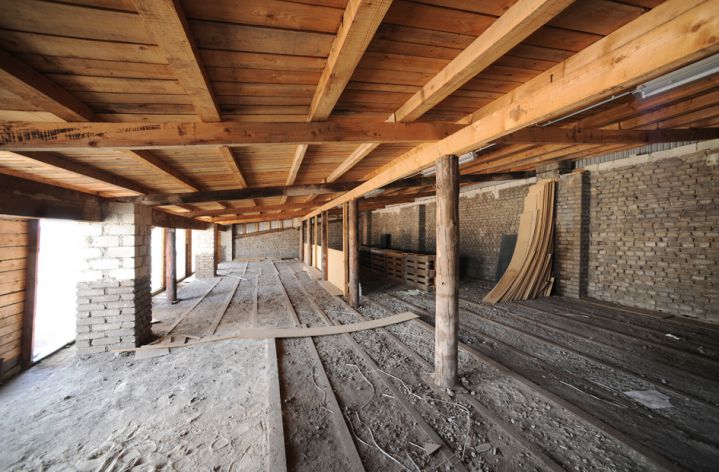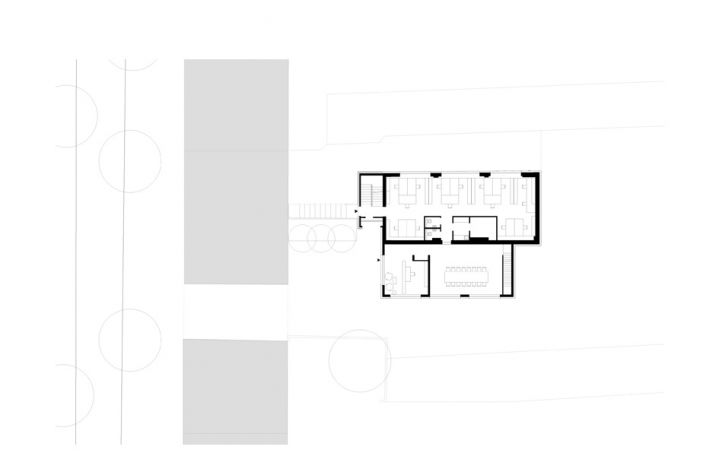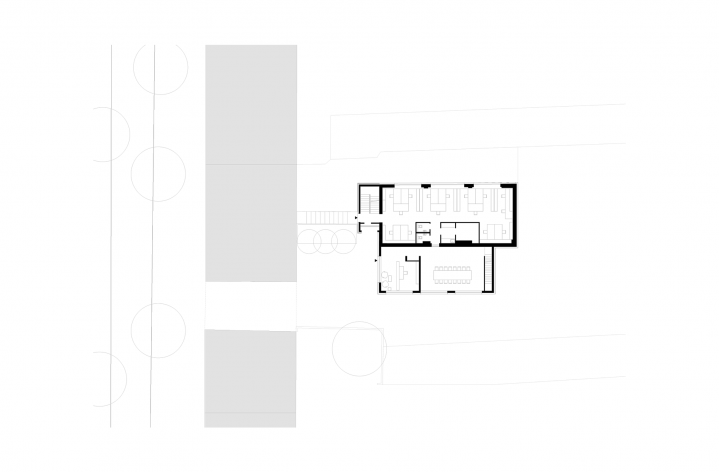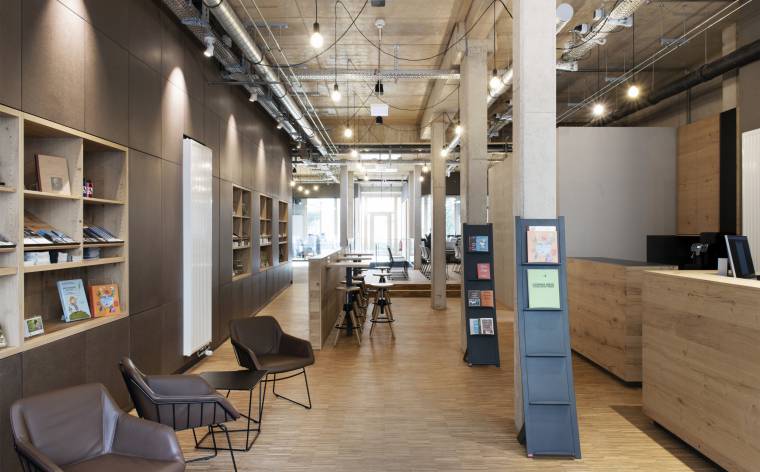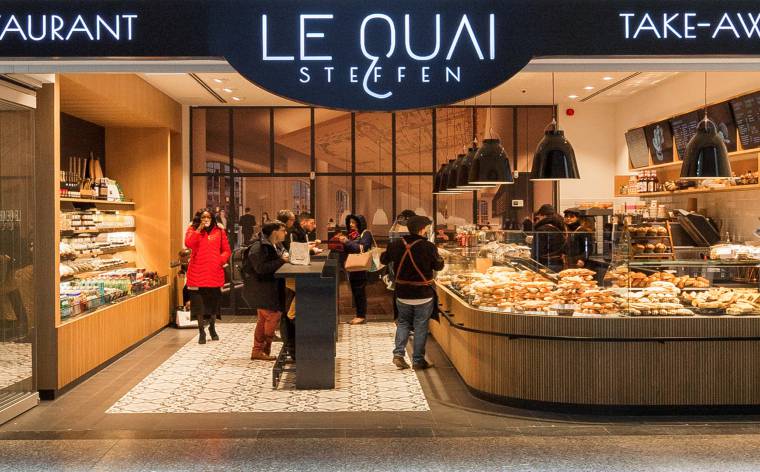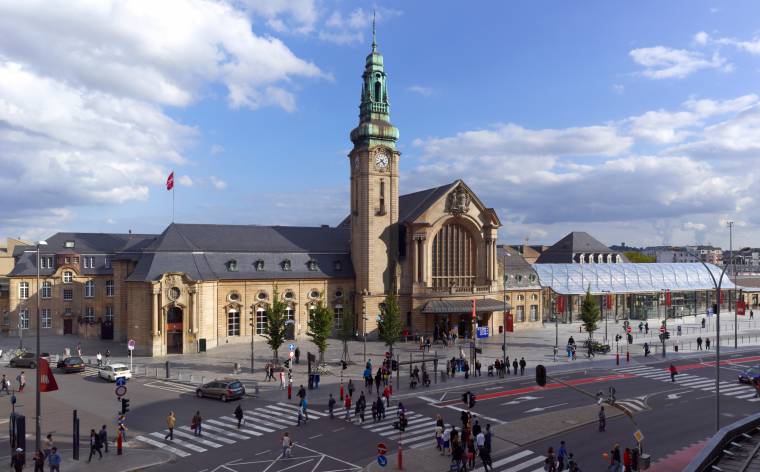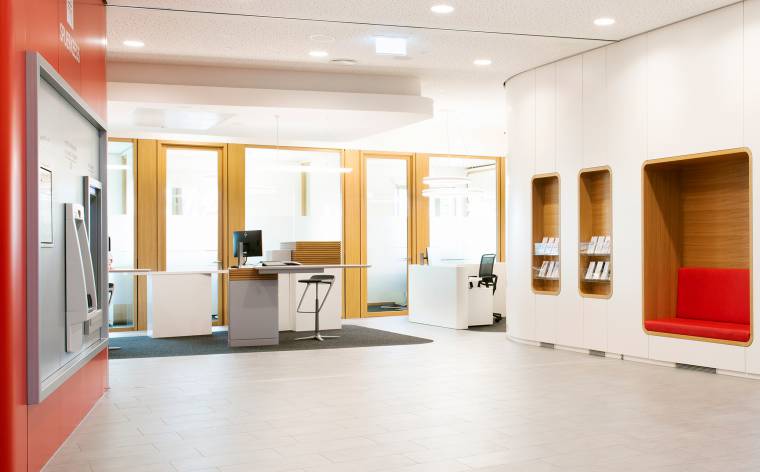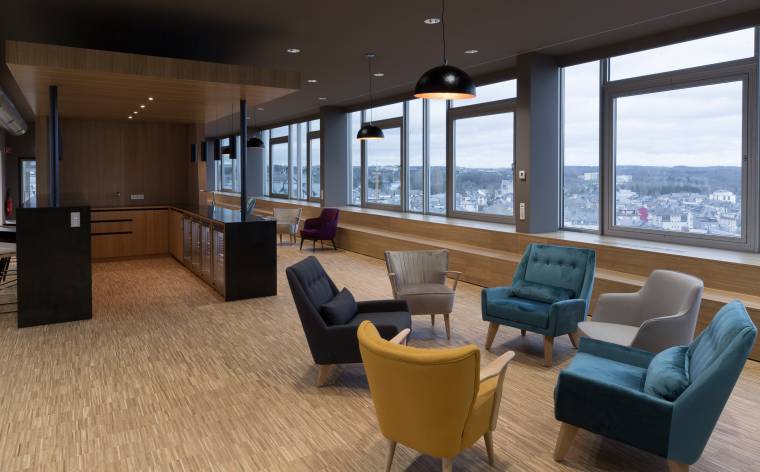Category :
Interior design
Project :
Conversion of a former joinery into an architectural office
Client :
WW+, Esch-sur-Alzette/Trier (L/D)
Country :
Luxemburg
Area :
gfa 720 m²
Start of planning :
2011
Realisation :
11/2012 - 08/2013
Share on
project Conversion of a former joinery into an architectural office complete architecture services WW+, Esch-sur-Alzette/Trier (LUX/GER) civil engineering Simtech, Luxembourg (LUX) artist Mich Geimer, Esch-sur-Alzette (LUX) gfa 720 m² ufa 518 m² gv 2.248 m³ start of planning 2011 realisation 11/2012 - 08/2013
Before it was converted into an architectural office following a period of vacancy, the building at 53 Rue de l’Usine used to house a workshop and warehouse. The original joiner’s workshop was constructed back in 1920 and subsequently underwent numerous alterations and extensions under the guidance of the Reckinger family, an Esch family business that took up residence in 1968. The building is located back from the street in the middle of a residential area and is characterised by garage structures on both sides and a two-storey block perimeter behind it. This is a common feature of town planning seen in the heart of Esch: residential living within a block perimeter and work premises in the second-row courtyard of a residential structure consisting of two-storey terraced houses. For technical authorisation reasons, the basic premise of the conversion was to maintain the cubature of the building. The shell of the building underwent minimal refurbishment and merely had a striking stair tower added, to bring the inadequate entrance up to current fire prevention code requirements. The old building essentially kept its cubature and load-bearing walls and was opened up to its exterior environment through large window openings. The gutted layouts of the three-storey building provided the freedom – always in relation to the existing structure – to design very open spaces and to create interesting views in and out.
Concept
The heart of the building is made up of two superimposed open-plan offices, each with a box configuration, which houses a kitchenette, sanitary facilities and a print room. Both offices accommodate 15 workstations, which are grouped into sets of two or three among half-height room dividers in the form of mobile shelves. The ground floor opens outwards via a ceiling-high corner window in the reception area, which extends up into the second floor to the management office located above. Directly linked to the reception area is a large conference room, which in turn provides direct access to a further conference room and a library via the old staircase. The third floor houses the staff kitchen, which regularly hosts communal lunches of the entire team, as well as a small rest area, storage, archive and server rooms, sanitary facilities and a model assembly space.
Technology
Each floor boasts a controlled ventilation and extraction system with heat recovery, ensuring an adjustable clean and constant air quality. Heat is supplied by district heating. The lighting uses LED technology and is controlled by motion detectors, enabling automatic switchless activation in all the rooms. A combination of indirect light, incorporated in the furniture elements, spotlighting of the workstations and embedded ceiling spots in the secondary rooms ensure individually customised lighting conditions.
Colours and materials
The dominant colour white gracing the walls, ceilings and furniture is highly reflective, resulting in a light and clear spatial appearance. Natural materials such as oak used for the windows and the newly installed timber floors, as well as the polished timber subfloor, create a warm and comfortable atmosphere and provide a contrast to the unrendered brickwork, which has merely been painted. The new stair tower reveals exposed concrete stairs, which – together with the ceiling-high railing featuring black steel flat bars – bestow a highly functional character upon this access area. Secondary rooms such as the staff kitchen and the former staircase linking the ground floor with the upper storey have been given a traditional red-brown “ox blood” coat of paint. Colour accents have been placed by the pink armchairs in the reception area and the apple-green upholstered chairs in the conference rooms, while pictures and a photo gallery lining the open corridors and staircases provide further eye catchers. Esch resident artist Mich Geimer designed the truck tarpaulin for the rainscreen cladding of the stair tower. The entire existing structure of the building features a white rendered façade.
Sustainability
The principle of sustainability has been adhered to with the fundamental approach of preserving the existing building as much as possible, of leaving surface characters intact and of newly introducing natural materials such as wood, glass and concrete. The building has been insulated from the outside and fitted with high-quality triple timberaluminium glazing. Particular emphasis has been placed on ergonomic desk chairs and ensuring staff can enjoy a space for relaxation in the rest area. rest area
Contact us !
